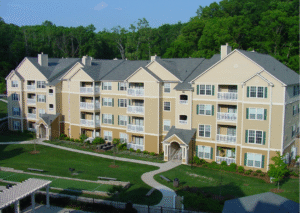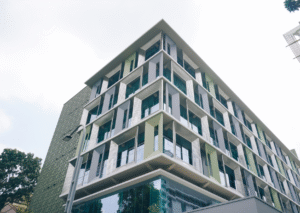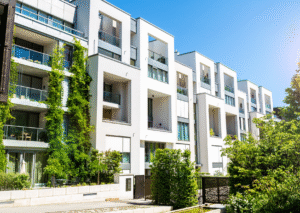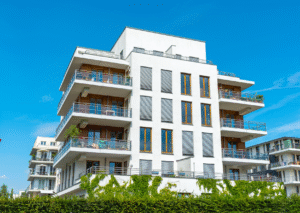What Are Investment Property Loans and Why Do They Matter?
Real estate investors aiming to build long-term wealth and expand their holdings often begin by exploring investment property loans. These loans are tailored for individuals purchasing properties not intended as primary residences but for income generation or appreciation. Unlike standard home loans, investment property loans usually come with stricter credit requirements, higher interest rates, and larger down payments (U.S. Department of Housing and Urban Development). However, they also unlock the door to scalable investment strategies and passive income.
Investment property loans come in many forms, including conventional financing, government-backed options like Fannie Mae and Freddie Mac loans, and private money lending. Understanding which type suits your investment strategy is critical. While a traditional mortgage might suffice for a first rental, more complex portfolios often require strategic and layered financing.
How Can Fix and Flip Financing Help You Grow Quickly?
Fix and flip financing is ideal for investors looking to purchase undervalued properties, renovate them quickly, and resell at a profit. These short-term loans are typically issued by private lenders and hard money lenders for investors. Because they are based more on the property’s after-repair value (ARV) than the investor’s credit profile, they offer flexibility and speed.
What Is Short-Term vs Long-Term Mortgage Options?
Short-term options, like fix and flip financing or bridge loans for real estate, are designed to be repaid in under a year. They provide liquidity to act on deals fast. Long-term mortgage options, such as a buy and hold mortgage, are intended for sustained cash flow over time. Choosing between the two depends on your investment timeline and exit strategy.
When Should You Consider Bridge Loans for Real Estate?
Bridge loans are temporary financing solutions that help investors close quickly while waiting for permanent financing or sale proceeds. These are helpful in competitive markets where speed can secure the deal. They are also used to finance renovations before refinancing under a long-term program.
How Do Hard Money Lenders for Investors Fit In?
Hard money lenders offer asset-based lending, where the property secures the loan more than the borrower’s financial background. These lenders can fund deals in a matter of days, making them attractive for fix and flip investors or when bank financing isn’t feasible.
What Is a Buy and Hold Mortgage for Long-Term Wealth?
A buy and hold mortgage is geared toward rental property investors who intend to maintain ownership for years. These mortgages emphasize sustainability—providing monthly income through rent and long-term appreciation. Investors should compare rental property mortgage rates and terms to ensure cash flow covers the mortgage and yields profit.
Buy and hold strategies can be paired with a cash-out refinance for investors seeking capital to fund additional purchases. The key is understanding how the loan-to-value ratio (LTV) affects refinancing eligibility and how market conditions may influence rental income potential.
Why Should You Use BRRRR Strategy Loans to Expand?
The BRRRR strategy (Buy, Rehab, Rent, Refinance, Repeat) is a powerful way to scale your real estate portfolio efficiently. BRRRR strategy loans often begin as short-term rehab loans, transitioning to long-term financing after the property is stabilized. This model allows investors to recycle their initial capital repeatedly.
How Does Cash-Out Refinance for Investors Work?
After stabilizing a property, investors use a cash-out refinance to extract built-up equity. The funds are then used for the next purchase or rehab, continuing the BRRRR cycle. Key metrics like LTV and rental income are assessed during underwriting.
What Are DSCR Loan Requirements for This Strategy?
A Debt Service Coverage Ratio (DSCR) loan evaluates an investor’s ability to repay the loan based on property cash flow. Most lenders require a DSCR of at least 1.25, meaning the property must generate 25% more income than the debt service. These loans are popular for their flexibility and limited income documentation (National Association of Realtors).
How Do Rental Property Mortgage Rates Affect Your Returns?
Rental property mortgage rates directly impact your cash flow. Higher rates can reduce monthly income, making some properties unprofitable. Conversely, locking in low rates can significantly improve returns over the life of the investment. Comparing rates across lenders and adjusting your loan term can help optimize profitability.
What Should You Know About Non-Owner Occupied Mortgage Options?
Non-owner occupied mortgage options are structured for investment properties rather than primary residences. These loans come with distinct underwriting guidelines, including higher down payments and reserve requirements. They’re available through traditional banks, credit unions, and private lenders.
Understanding the differences in requirements and risk tolerance of each lender is essential for qualifying and selecting the best financing option. Terms vary widely, and investors must carefully analyze how these affect overall returns and scalability.
How Do New Construction Loans and 100% Financing for Real Estate Deals Work?
New construction loans for investors support ground-up builds or significant rehab projects. These loans are typically interest-only during the construction phase and convert to permanent loans once the project is completed. They’re ideal for adding unique or high-demand properties to your portfolio.
100% financing for real estate deals is rare but available through specialized lenders or partnerships. These may require cross-collateralization, equity pledges, or mezzanine financing. While appealing for those short on capital, the risks and repayment obligations must be carefully considered.
What About Foreign National Investor Loans—Can They Scale Your Portfolio?
Foreign national investor loans allow non-U.S. residents to invest in American real estate. These loans are tailored to accommodate overseas investors who may not have a U.S. credit profile. Lenders evaluate alternative documentation such as international credit reports or asset declarations.
These loans can be instrumental for global investors seeking stable, appreciating assets. However, they often come with higher interest rates and stricter terms. Choosing the right partner, such as a commercial mortgage broker experienced in international lending, is crucial.
Which Alternative Real Estate Lending Solutions Should Investors Explore with a Commercial Mortgage Broker Services?
Alternative real estate lending solutions include private lending, crowdfunding platforms, and real estate investment trusts (REITs). These provide access to capital outside of traditional banking systems and can be structured for specific goals—whether short-term gains or passive income.
A commercial mortgage broker provides guidance through these options, connecting investors with suitable lenders, negotiating favorable terms, and ensuring regulatory compliance. Brokers with access to a wide lender network, like those at No Limit Investments, can dramatically streamline and strengthen your financing strategy.
Ready to Scale Your Real Estate Portfolio with Expert Support?
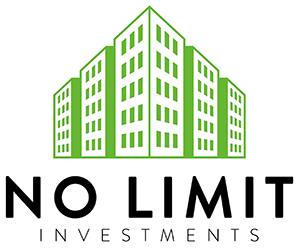
Navigating the world of real estate investment financing doesn’t have to be overwhelming. With the right knowledge and access to diverse mortgage products—from DSCR loans to fix and flip financing and everything in between—you can position yourself for sustainable growth. Whether you’re just starting or seeking advanced strategies to scale, the key is choosing financing tools that align with your goals.
Partner with No Limit Investments to explore the most powerful financing solutions available. Their team of experienced professionals is ready to help you take decisive steps toward building your real estate empire. Call now or schedule an appointment for more details!
How Can Strategic Financing Accelerate Your Path to Wealth?
Real estate investing is as much about the financing as it is about the property itself. Understanding your mortgage options opens the door to larger portfolios, higher returns, and reduced risk. From leveraging cash-out refinances to structuring deals with a favorable LTV, the knowledge and execution of smart financing strategies are what separate thriving investors from stagnant ones.
Don’t leave your success to chance. With proper education, trusted advisors, and bold execution, your path to scalable wealth through real estate is well within reach.
Works Cited
U.S. Department of Housing and Urban Development. “FHA Loans.” HUD.gov, www.hud.gov/program_offices/housing/fhahistory. Accessed 20 June 2025.
National Association of Realtors. “What Is DSCR and Why It Matters for Real Estate Investors.” nar.realtor, 2024, www.nar.realtor/research-and-statistics/housing-statistics. Accessed 20 June 2025.
Federal Housing Finance Agency. “Conforming Loan Limit Values.” FHFA.gov, www.fhfa.gov/DataTools/Downloads/Pages/Conforming-Loan-Limits.aspx. Accessed 20 June 2025.
Frequently Asked Questions:
- What is the difference between short-term and long-term mortgage options for real estate investors?
Short-term mortgage options, such as fix and flip financing or bridge loans, are designed for quick turnarounds—usually under 12 months. These are ideal for projects where the goal is to renovate and sell quickly. Long-term mortgage options, like buy and hold mortgages, support rental properties intended to generate income and appreciate over several years.
- How do DSCR loan requirements work for real estate investors?
Debt Service Coverage Ratio (DSCR) loans evaluate whether a property’s income covers its debt obligations. Most lenders require a DSCR of at least 1.25, meaning the property must generate 25% more income than the total debt service. This loan is especially useful for investors using the BRRRR strategy or expanding their rental portfolios.
- What is a cash-out refinance for investors, and when should it be used?
A cash-out refinance allows investors to access the equity they’ve built in a property by refinancing for a higher amount than the current loan balance. The extra funds can then be used for future investments or renovations. This is commonly used in the BRRRR strategy to scale without injecting more personal capital.
- What makes non-owner occupied mortgage options different from traditional home loans?
Non-owner occupied mortgage options are tailored for investment properties rather than primary residences. They usually require higher down payments, stricter underwriting, and sometimes higher interest rates. These loans focus more on the property’s income potential and investor experience.
- Can foreign nationals get investment loans in the U.S.?
Yes, foreign national investor loans are available for non-U.S. residents interested in American real estate. These loans require alternative documentation, such as international credit reports or proof of foreign income. They may come with higher interest rates, but they allow global investors to participate in U.S. real estate markets.

